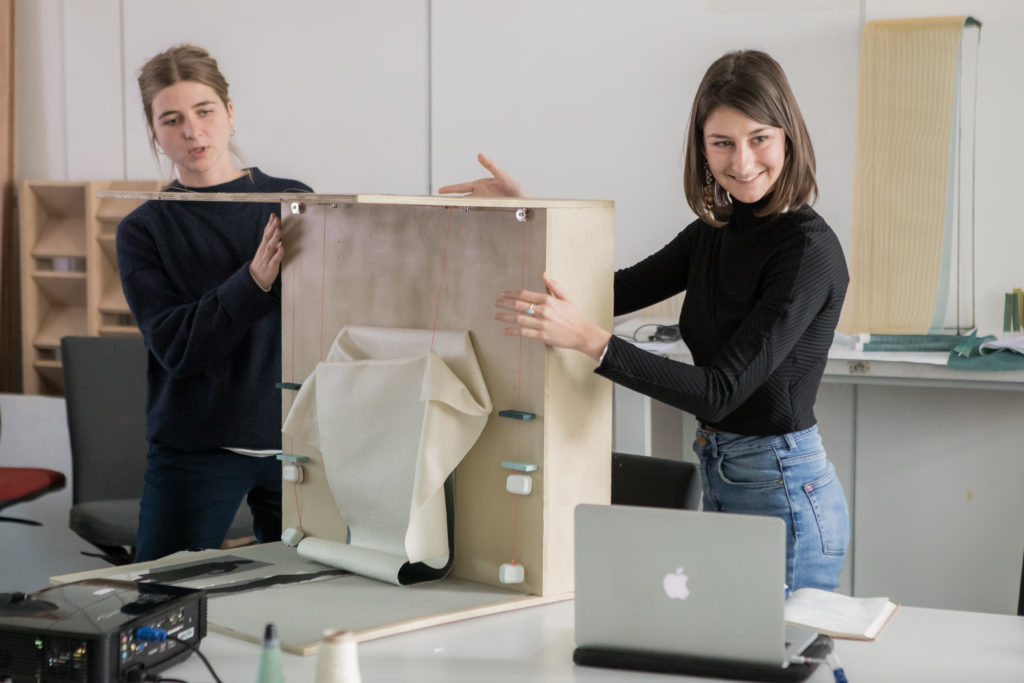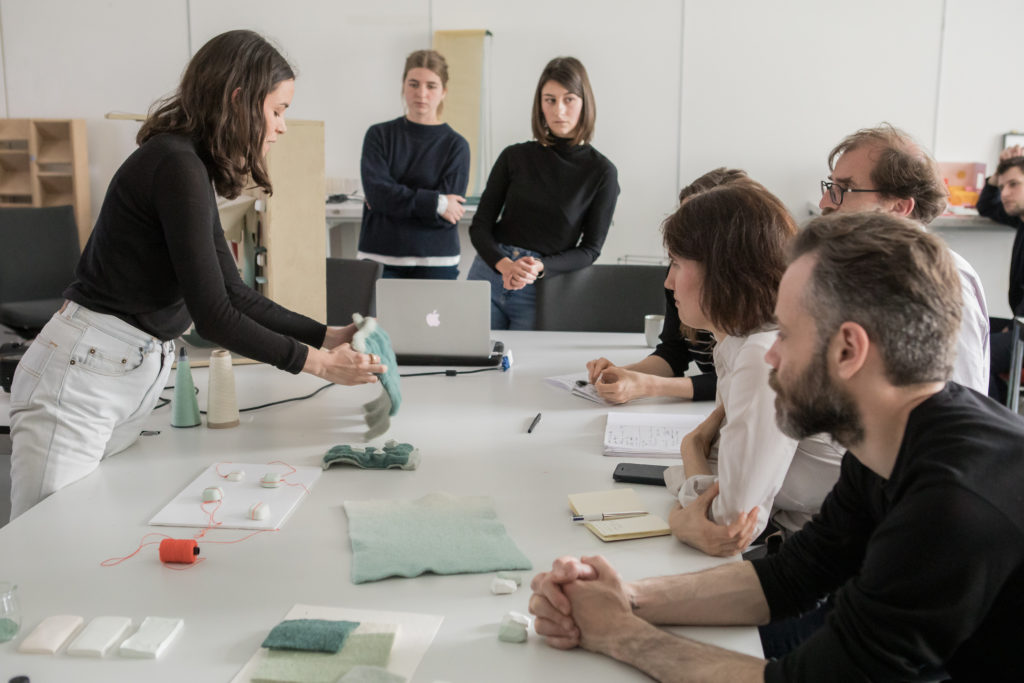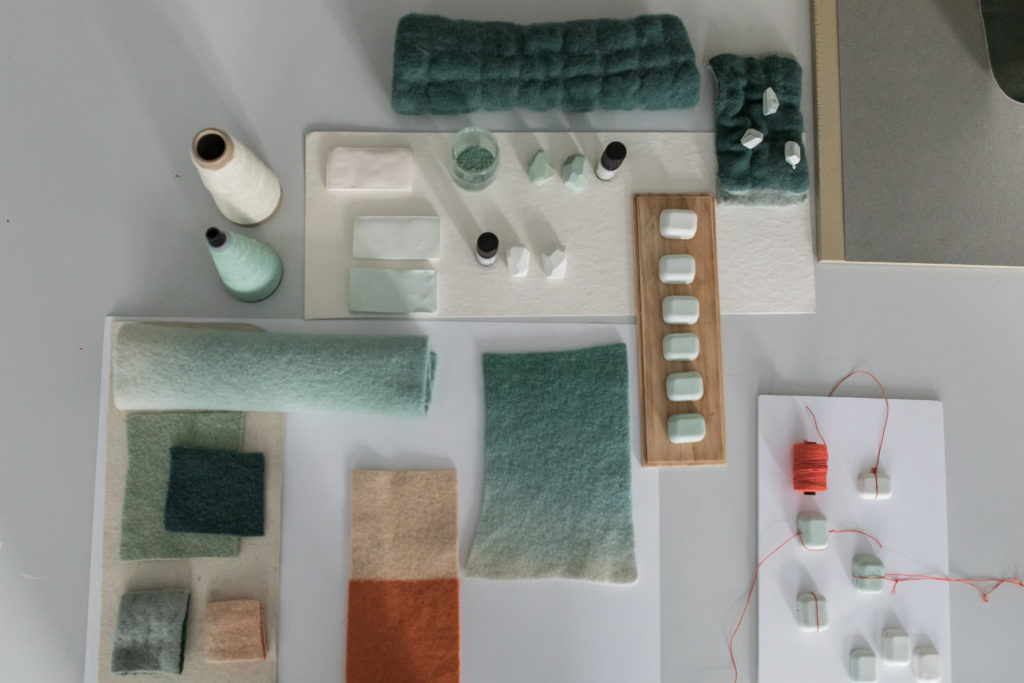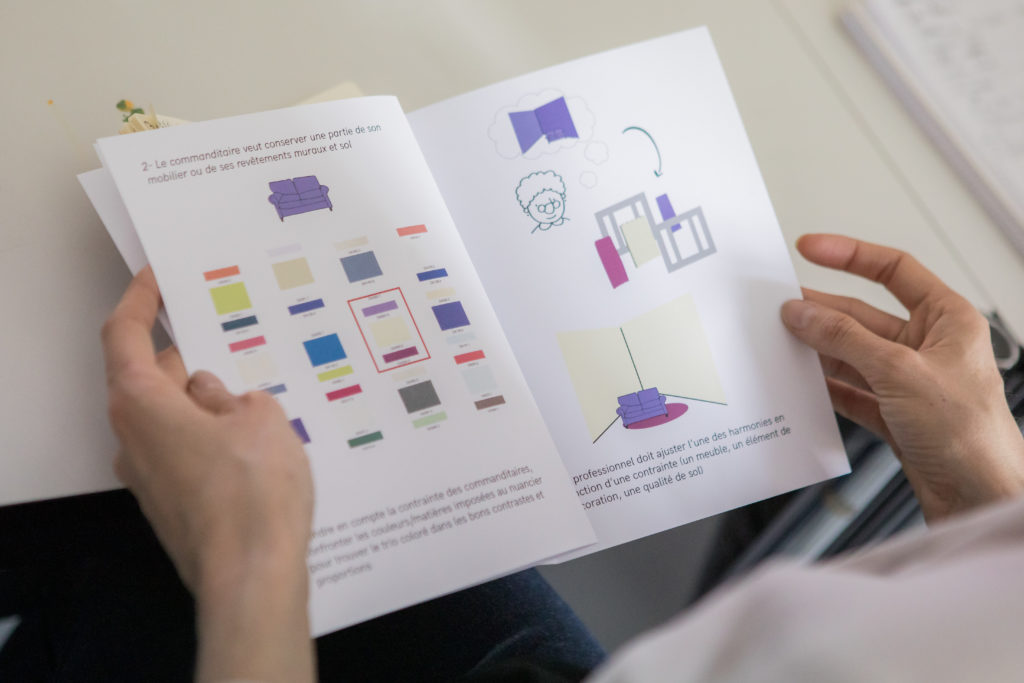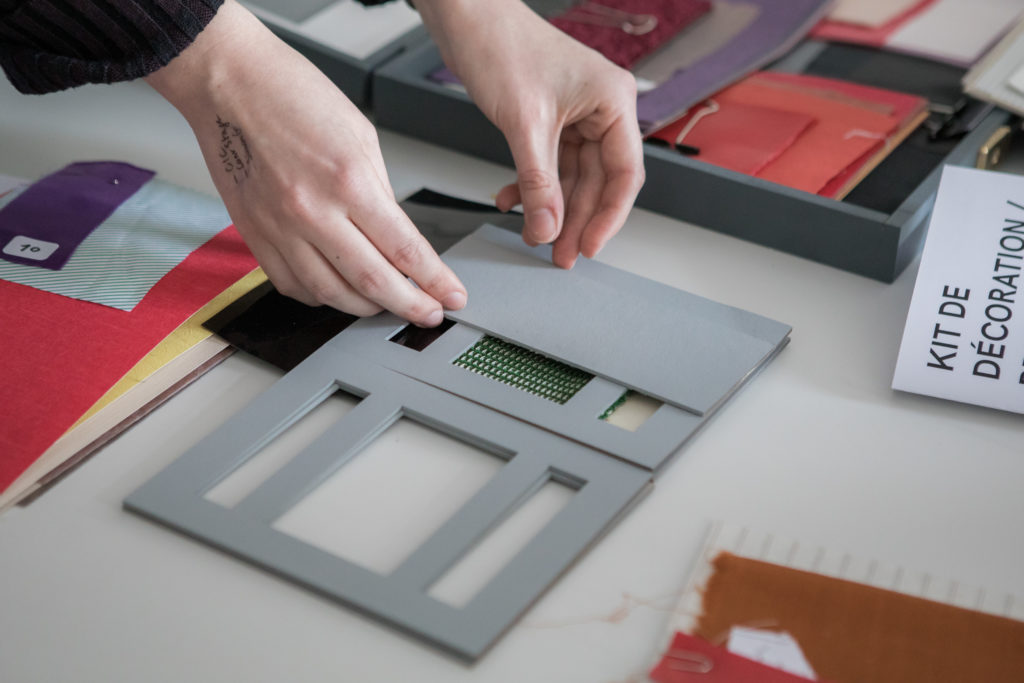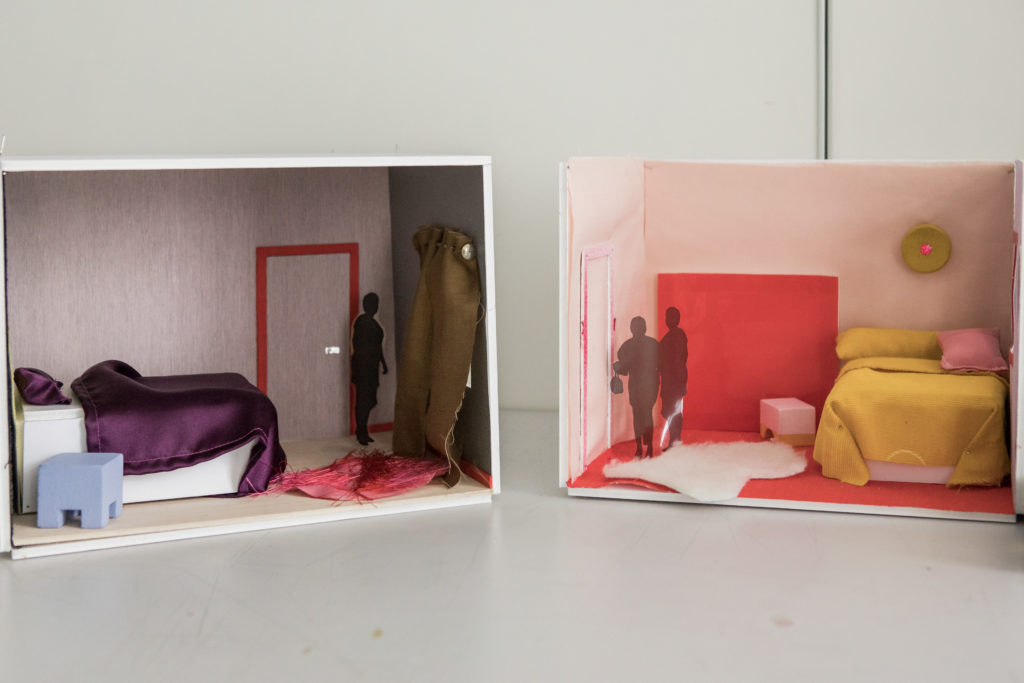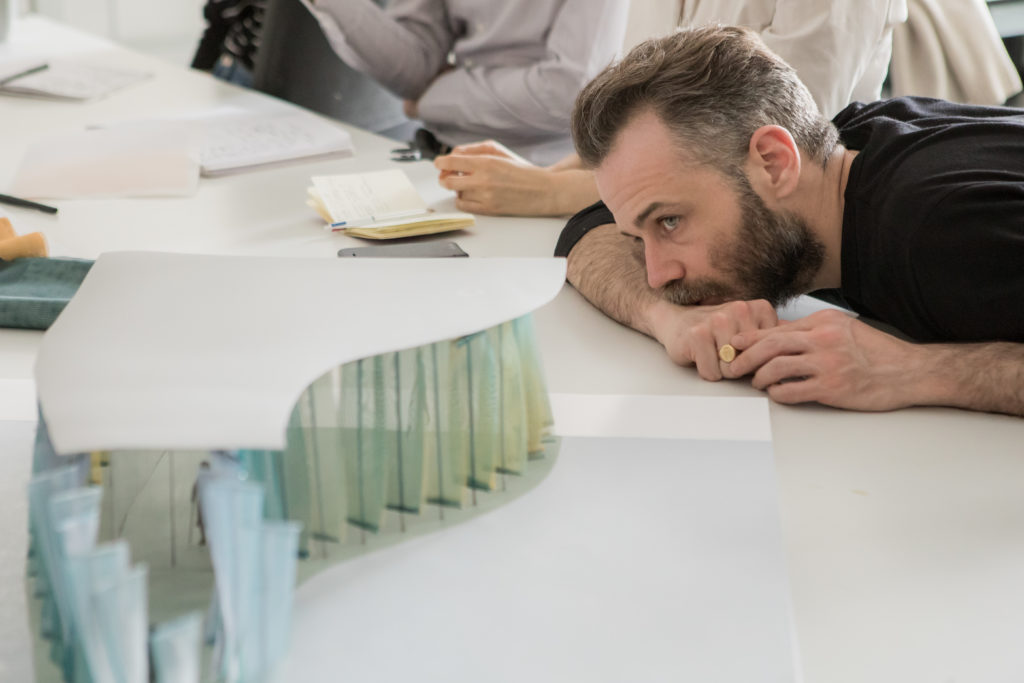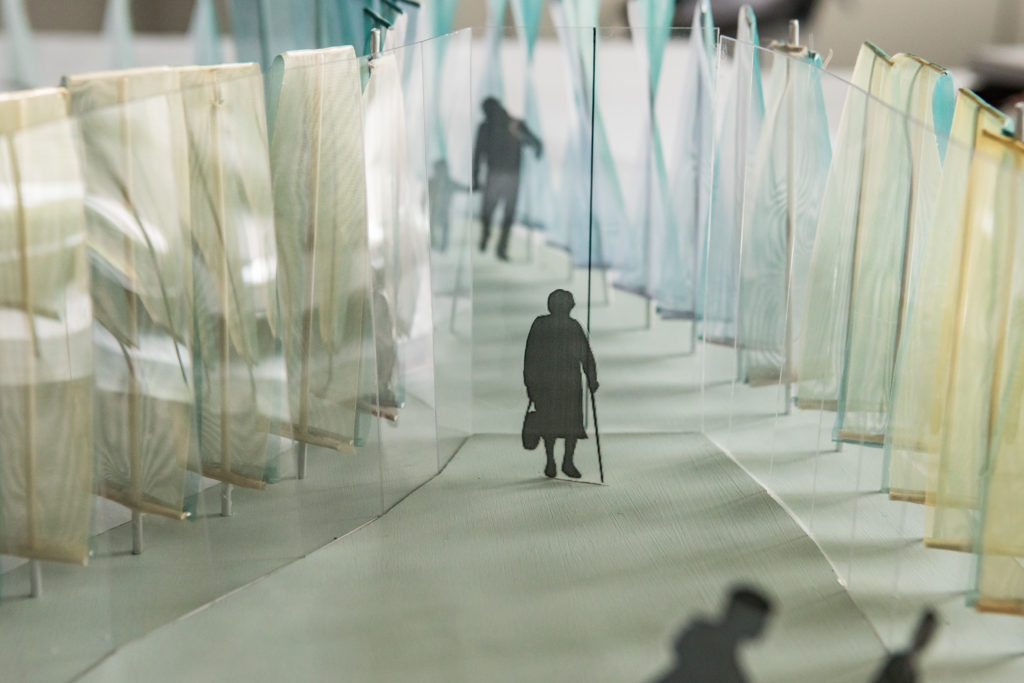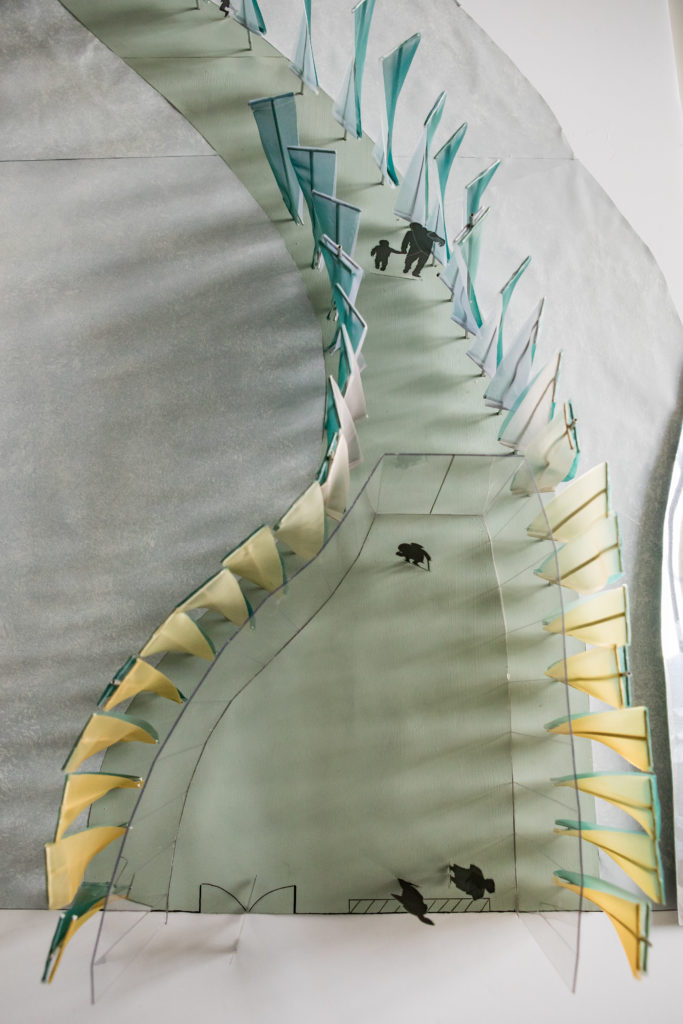Working with living matter
Conference gathering Claudia Pasquero (ecoLogicStudio) and Nathalie Blanc (head of the Centre des Politiques de la Terre) on the 11th of January 2023, within the framework of the cycle : « Creators facing climate emergency » convened and programmed by the Fondation Thalie in partnership with Ecole des Arts Décoratifs.
How can today’s waste and pollution become a solution to feed and sustain humanity? In what ways can organic and artificial intelligence influence post-anthropocentric architecture? And how can we define the new aesthetics of a post-human world?
Claudia Pasquero, architect and co-founder of ecoLogicStudio, works on the transformation of our lifestyles and urban landscapes through solutions inspired by non-human elements, such as slime mould, microalgae, and artificial intelligence. This conversation with Nathalie Blanc, director of research at the CNRS and director of the Earth Politics Center, will explore their work in favour of an ‘environmental aesthetic’ and new “post-human” architectures that may help us to respond to the climate emergency.
An event co-moderated by Stefano Vendramin, curator of the programme “Creators facing climate emergency”, and Aurélie Mosse, PhD, professor of textile and material design at the École des Arts Décoratifs, and co-director of the Soft Matters research group at Ensadlab.
Further details: here
Venue: Ecole des Arts Décoratifs
Gossamer timescapes: designing self-actuated by the home is a practice-based and design-led research sitting at the intersection of textile design, architecture and smart technologies. It explores how self-actuated textiles can inform new poetical and cultural possibilities for smart technologies in the field of design. The research focuses on the role three-dimensionally dynamic textiles can play in contributing to the shaping a culture of interconnectivity within the context of the Western home.
By relocating the design of smart materials beyond a culture of the measured time and space -where technology has been primarily conceived as a mean to control and overcome the limitations imposed by nature-, self-actuated textiles can contribute to more resilient practices of inhabitation. To do so, this thesis argues for the need to underpin the design of smart materials and technologies by principles of interconnectivity- interactions grounded in an earth-bound temporality in which technology is less conceived as a user-oriented than an earth-life centered means. In other words, self-actuated textiles, by challenging the thinking and making of the post-modern western home as a reality disconnected from nature, can contribute to the design of more sustainable practices of inhabitation.
Building upon the construction of a theoretical framework in which the question of time is placed as the centre of the inquiry, a series of design experiments into the appropriation of photovoltaic, light-responsive and electro-active polymer technologies contextualise and support this argument. These experiments are structured in a series of conceptual, material and immersive probes developed from a material tale methodology mixing fragments of reality and fiction to explore the poetic and cultural potential of smart technologies. These probes evolved in dialogue with each other and simultaneously with the construction of the theoretical framework of this thesis. They are part of the same design process. Reef – an experiment into the design of a self-actuated ceiling surface changing with the wind underpinned by electro-active polymers – plays a prominent role in the construction of the thesis’ argument by investigating the appropriation of values of interconnectivity into smart domestic surfaces.
Main researcher: Aurélie Mosse
Funding: This research was undertaken in the Centre for IT & Architecture, Royal Danish Academy, School of Architecture in collaboration with Textile Futures Research Centre, Central Saint Martins, University of the Arts. It was supported by a PhD grant in Tectonic Textiles supervised by Mette Ramsgaard Thomsen & Carole Collet and administrated by the Royal Danish Academy.
Further details: here
is an inaugural lecture of the ArTeC 2020 international chair by Prof. Mette Ramsgaard Thomsen, architect and head of the Centre for IT & Architecture (CITA) at the Royal Danish Academy in Copenhagen co-organised on the 16th of November 2020 by Ensadlab, Ecole des Arts Déco and by EUR ArTeC.
This inaugural lecture discuss a bio based material paradigm for architecture. Bio-based materials are fundamentally different to current building materials being characterised by their complex heterogeneity, unpredictable behaviours and limited lifespans. The lecture introduces a framework for thinking bio based materials in architecture, their tradition and future digital practice. By presenting examples from the CITA research group, Mette Ramsgaard Thomsen exemplifies this framework and unfold future research perspectives. The conference is hold in English and online due to the covid-19 context and will be followed by a time of exchange and questions. It is further extended by the « 3D crafting bioluminescence » workshop organised at Ecole des Arts Déco in the spring 2021.
Speaker bio
- Mette Ramsgaard Thomsen examines the intersections between architecture and new computational design processes. During the last 15 years her focus has been on the profound changes that digital technologies instigate in the way architecture is thought, designed and built. In 2005 she founded the Centre for IT and Architecture research group (CITA) at the Royal Academy of Fine Arts, School of Architecture, Design and Conservation where she has piloted a special research focus on the new digital-material relations that digital technologies bring forth. Investigating advanced computer modelling, digital fabrication and material specification CITA has been central in the forming of an international research field examining the changes to material practice in architecture. This has been led by a series of research investigations developing concepts and technologies as well as strategic projects such as the international Marie Curie ITN network Innochain that fosters interdisciplinary sharing and dissemination of expertise and supports new collaborations in the fields of architecture, engineering and fabrication and the Sapere Aude Advanced Grant Complex Modelling examining new modelling paradigms in computational design.
Moderation
- Aurélie Mosse
- Yves Citton
Funding
- EUR ArTec via the ArTeC international chair 2020
A 6-week project developed in collaboration with the architectural agency SCAU in the framework of the materiality futures course, 1st year MA Textile & Material Design in 2019.
In dialogue with the architecture.s in which it is inserted, students explored which roles textiles can play in the design of places for the elderly. The focus was especially on how textile design can deal with the relationship patients have with their memory, the question of intimacy and being at home, the loss of landmarks and disorientation. Three proposals were developed by groups of 2-3 students, ranging from a deployable textile hut to welcome relatives to a design kit supporting inclusive decoration for people with visual deficiency, including the design of an entrance space with poetic and transitional qualities for residential care for senior citizens.
students: Astrid Commeigne, Lucie Maine, Marine Montiel, Elise Ory, Nicolas Quet, Lou Ramage, Sophie Zampieri
Coordination: Aurélie Mosse
Teaching team: Jean-François Bassereau, Aurélie Mosse, Eric de Thoisy
Partners: the architectural agency SCAU
Related publication
- SCAU, 2019. « Lieux de vie[ux] », workshop SCAU architecture / ENSAD, 30 avril 2019
a 6-week project in collaboration with CITA, Royal Danish Academy, in the framework of the 2021 « matérialités futures » course, 4DTM, Ecole des Arts Décos
Building on the Imprimer la lumière research project, this course asks how architects and designers can work with bioluminescent micro-organism to develop biosourced materials informed by 3D printing for an architectural context. Bioluminescence is a chemical form of light produced by many marine organisms, some insects and mushrooms. While bioluminescent genes are used as markers in biology and medicine, recent experiments in the biodesign community have explored bioluminescence as an alternative to public and domestic lighting or as prospective garment finishing. By learning how to grow luminescent bacteria and investigating how they can be appropriated through 3D soft structures, primarily 3D printed, students questioned and explored both conceptually and materially how bioluminescent bacteria can be part of a strategy for a living architecture underpinned by 3D printing.
Students: Laura Bartier, Ines Bel Mokhtar, Maty Biayenda, Coraline Chancibot, Lisa Grand, Chloé Hercé, Alyssa Jos, Minji Koo, Julie Lagarde, Alexandra Lenartowicz, Eléonore Pierrard, April Saint-James
Coordination: Aurélie Mosse
Teaching team: Tony Jouanneau, Aurélie Mosse, Mette Ramsgaard Thomsen, Martin Tamke, Guro Tyse
Support: EUR ArTeC, Olivier Bienz, CITA
Related publication:
- Ramsgaard Thomsen, M., Tamke, M., Mosse, A., Sieder-Semlitsch, J., Bradshaw, H., Fabritius Buchwald, E., Mosshammer, M., 2022, ‘Imprimer la lumière: 3D printing bioluminescence for architectural materiality’, In: Yuan P.F., Chai H., Yan C., Leach N. (eds) Proceedings of the 2021 DigitalFUTURES. CDRF 2021. Springer, Singapore.

